6 Hitchcock Films with Major Jewelry Moments
Masterworks from Van Cleef & Arpels and Verdura made appearances in the director's work
This week, The New York Times published a story titled, “How to Watch Hitchcock: 5 Steps to Unlock the Master of Suspense.” The author outlined ways the director “combined camera, sound and perspective techniques to create almost unbearable tension and anxiety for the audience.”
Do you know what else he did? Hitchcock made jewelry a key prop in any number of movies to advance the plot.
Jewelry was often used as a clue to solve a murder. It reflected social status or style of characters. To get extraordinary jewelry on screen, Hitchcock undoubtedly encouraged Marlene Dietrich and Joan Fontaine to wear their own treasures in Stage Fright (1950) and Suspicion (1941), respectively.
In Hollywood Jewels, the book I co-authored with Penny Proddow ages ago, we devoted a chapter to Hitchcock. The following six movies are among my favorites and would make a fabulous at-home jewelry film festival. All are available on streaming platforms.
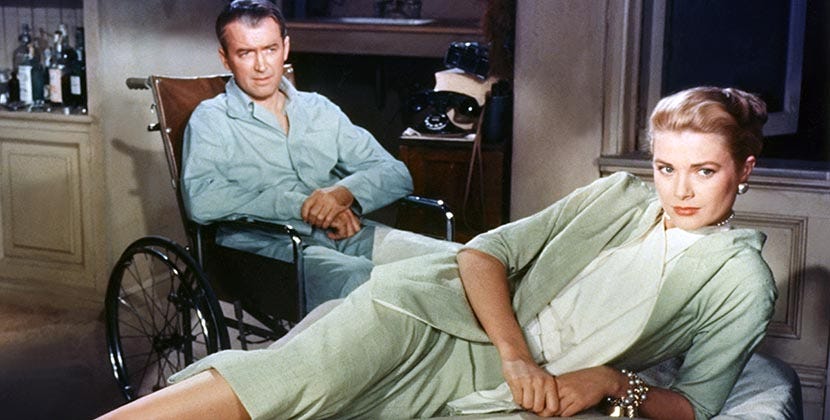
Rear Window (1954)
I first saw Rear Window as a pre-teen when my father, who was a film buff, showed it to me and my sister. Over the years, I’ve watched it countless times. There’s a murder in the movie, but it’s really about relationships.
The main one revolves around Lisa Fremont (Grace Kelly), a fashion editor and L.B. “Jeff” Jeffries (James Stewart), a photojournalist who is confined to a wheelchair in his Greenwich Village apartment. Jeff passes the time watching his neighbors through a large bay window that opens onto a courtyard with views into several apartments.
Lisa visits Jeff daily wearing stunning clothes and accessories. Her bold pearl charm bracelet still has a cult following. Several versions are offered on Etsy.
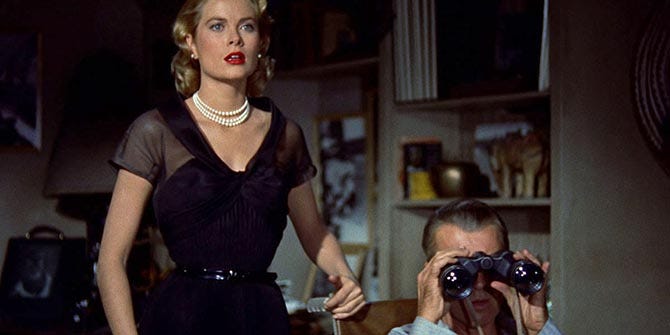
The use of jewelry in the movie goes beyond being part of her costume.
When Jeff tells Lisa how the suspicious neighbor rummaged through his absent wife’s handbag and pulled out her necklace and rings, Lisa finally becomes convinced of his murder theory.
She declares, “Women don’t keep their jewelry in a purse, getting all twisted and scratched and tangled up.” And, she adds, “Why a woman going anywhere but the hospital would always take makeup, perfume and jewelry.”
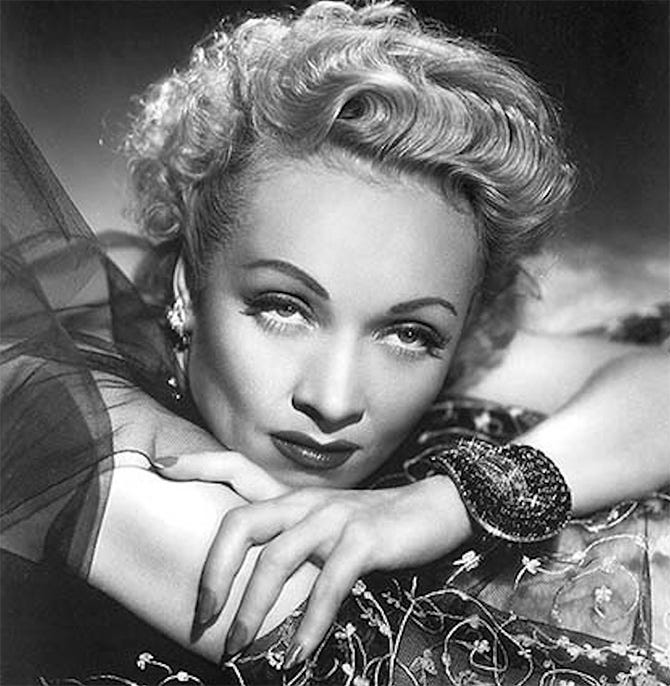
Stage Fright (1950)
Few actresses have smoldered on screen and in photos like Marlene Dietrich. The star knew lighting and how to work her angles. Jewelry was one of the props she used effectively to make the pictures more potent.
In Alfred Hitchcock’s 1950 murder mystery Stage Fright, the actress flaunted one of the largest jewels in her collection, a Van Cleef & Arpels Jarretière ruby and diamond bracelet.
Dietrich, who was 49 years old when the film debuted, played an aging actress who drove her young lover, Jonathan Cooper (Richard Todd), to murder her husband in a fit of jealous rage. Like Dietrich in real life her character, Charlotte Inwood, had clearly been the recipient of many significant jewelry gifts.
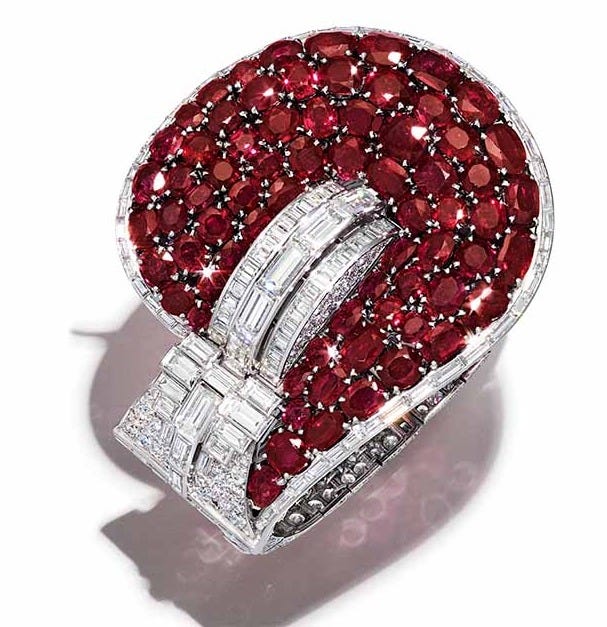
Louis Arpels of Van Cleef & Arpels had made the jewel out of several items in Dietrich's collection in 1937. According to family tradition, the Jarretière bracelet held a special place in Dietrich's heart among all her jewels.
It certainly is a masterwork. There is also a rumor that Arpels and Dietrich had an affair. Her affection for the piece could be proof of it. While the romance has never been confirmed, people who have read the couple's correspondence describe it as "intimate."
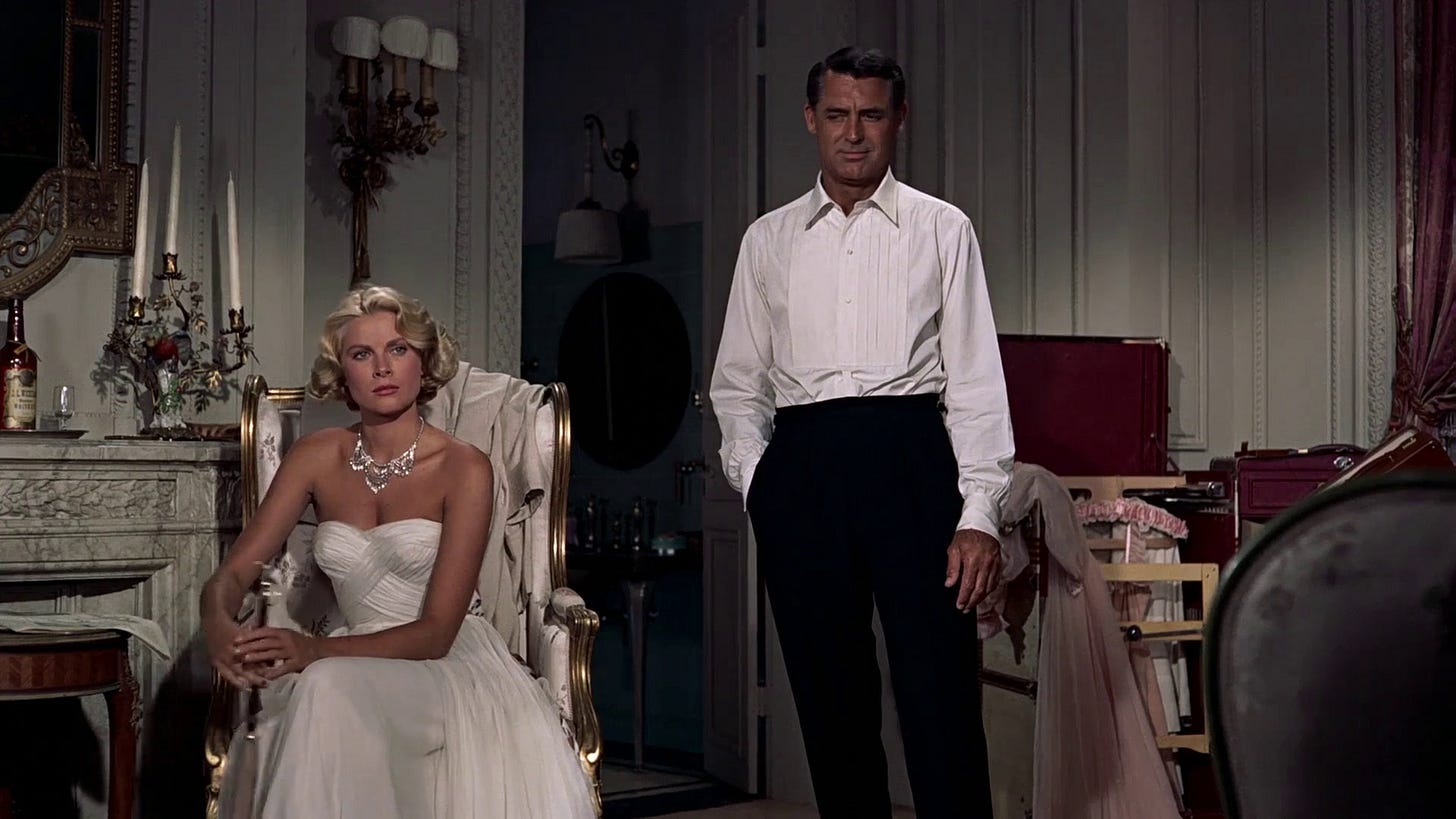
To Catch a Thief (1955)
In Hitchcock’s jewel-thief thriller, To Catch a Thief, Grace Kelly stars as Frances Stevens, an American heiress visiting the French Riviera with her bejeweled mother.
The film incorporates one of Hitchcock’s favorite scenarios, an innocent man who is accused of a crime and goes on the run. The accused in this case is John “The Cat” Robie, a retired jewel thief played by Cary Grant.
While the picture above is often shown as a great example of diamond jewelry in movies, it is costume. Frances wears it in an attempt to lure John into stealing it.
After studying the piece with all the seriousness of a connoisseur, he tells her: "You know as well as I do, this necklace is an imitation."
The jewelry may be fake, but the film is a lot of fun. Plus it has beautiful views of the South of France and a historic backstory. During the production, Grace met her husband, Prince Rainier of Monaco.
North by Northwest (1959)
Of the more than 50 films Hitchcock made, North by Northwest is widely considered to be one of his best and one of the greatest movies in history.
Cary Grant stars as Roger O. Thornhill, an advertising executive who is mistaken for another man and falsely accused of murder. While trying to clear his name, Roger meets up with the cool and stylish Eve Kendall (Eva Marie Saint).
Eve wears beautiful clothes and understated jewelry that ends up saving her life. She uses the excuse of a lost earring to get out of a tense situation.
Suspicion (1941)
Long before “self-purchasing” became a term for women buying their own jewels, Joan Fontaine paid for her lavish pieces. She once hilariously explained the reason:
“Somehow I was the kind of a girl to whom husbands—and other men, too—gave copper frying pans. I could never quite figure it out.”
Fontaine wore some of her finest treasures in the 1941 Hitchcock thriller Suspicion. In the film, she portrays Lina McLaidlaw, a wealthy woman who becomes infatuated with the con artist Johnnie Aysgarth (Cary Grant). From the first scene, it’s obvious that Johnnie is a hustler, but Lina doesn’t realize his duplicity until after they are married and arrive at a big house he somehow acquired but can’t pay for.
During the dramatic revelation that he is broke, Fontaine wears the magnificent Wing brooch she bought at Verdura in 1939.
The silhouette of the brooch with two elongated pear shape pink topazes weighing around 35.52-carats and engraved gold and diamond wings suggest the god Mercury’s winged feet.
In relation to the plot, there is a tale about Mercury escorting Larunda to the Underworld in Ovid. She has been sent there by Jupiter for betraying his trust. En route, Mercury falls in love with the beautiful, mischievous nymph.
I think the story could've been on Hitchcock's mind. It's possible he was familiar with the star's jewel or Fontaine may have brought it up. In any case, the symbolism is perfect for the scene in which her husband’s evil character is revealed and she can’t bring herself to leave him.
Vertigo (1958)
In Vertigo, another Hitchcock masterpiece, James Stewart plays San Francisco police detective, Scottie Ferguson, who has resigned from the force after his vertigo kept him from rescuing a fellow officer. Out of work, Scottie is persuaded by an old friend to follow his wife, Madeline (Kim Novak).
According to the husband, Madeline seems to be possessed by her great-grandmother Carlotta who committed suicide in 1855. Tailed by Scottie, Madeleine visits Carlotta’s grave and her house, which has become the McKittrick Hotel in a sleazy part of town. She sits in a museum studying her portrait, which depicts the woman in a Spanish-style necklace.
The jewel becomes the key to solving a murder.
Thanks for reading! If you enjoyed this post let me know by hitting the like button or making a comment.











The jangle from Grace Kelly’s charm bracelet is embedded in my brain! Love the necklace from Vertigo too.
Love the Hitch collection!! Did Joan Fontaine really say that? Tragic ....